|
|
 |
|
September 30, 2011
The wine writer Gerald Asher, whose column graced the pages of Gourmet over the course of several decades, recently penned a piece for Zester Daily on the role of the wine writer and/or wine critic. There are few journalists alive who understand that role better than Asher.
Wrote Asher: "I read recently in a wine blog that California wines are at their best when young, so the main selling point for them should be that they don't need to be aged. To say that California wines are at their best when young prompts two questions: Does the writer mean all California wines? And how does he define 'best'? Doesn't such a statement mean that what you taste in any young California wine is all there is and ever will be?"
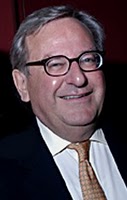 Asher offered a gentle rebuke to those wine journalists today who focus on the fresh, vibrant flavors of newly released young wines while paying scant attention to those wines that are built for the long haul. Asher offered a gentle rebuke to those wine journalists today who focus on the fresh, vibrant flavors of newly released young wines while paying scant attention to those wines that are built for the long haul.
My sense from a careful second read of Mr. Asher's column left me thinking he doesn't believe that most wine journalists or critics know the difference. He makes a fair point. He went on to say: "I know we live in an impatient age, but is there so much confusion among both writers and critics that they do not see the difference between wines that do or don't need the softening of age to be drinkable and wines that have qualities which age alone can spin into poetry you can taste?"
The headline of the article is "What Are Wine Writers Really For?" and you can read the whole thing at ZesterDaily.com, an online food and wine publication that regularly features some of the most accomplished and respected food and wine journalists in the business.
Of course, the headline raises a pertinent question. My take on Asher's answer is that the role of a wine writer is to, first, be informed and, second, to educate. He did that with distinction in his 30 years as Wine Editor at Gourmet.
Wine writing and wine criticism today is a different beast than it was when Gerald Asher entered the profession. The proliferation of wine blogs and micro-blogs, such as Twitter and Yelp, have made it possible for anyone who so chooses to hang out a shingle and declare himself a wine critic.
Asher's piece is thus an important bit of advice for those who would aspire to fill his shoes. The job requires more than enthusiasm and the ability to string together adjectives. It requires understanding wine at each stage of development.
That, dear reader, comes only with first-hand tasting experience. Buyer beware: Know your wine critic.
Posted by Robert Whitley at 11:23 AM
|
|
September 26, 2011
Paralysis, strangulation, derangement, violent death--this was fun! No, it’s not what you’re thinking. What I ‘m referring to is a show currently on display at the San Francisco Conservatory of Flowers a special exhibition of floral misdeeds based on Amy Stewart’s New York Times 2009 best-selling book Wicked Plants: The Weed That Killed Lincoln’s Mother and Other Botanical Atrocities. My friend Jeanne and I had come for a glimpse of the deadly nightshade, poison hemlock, white snakeroot, oleander, foxglove and other pretty little botanical sociopaths that lie in parks and gardens everywhere in the world waiting for victims.
It was late afternoon and we were winding down a perfect twenty-four hours in San Francisco. We began the day with breakfast (eggs fried in olive oil, Blue Bottle coffee) at the farmers’ market at the Ferry Building, then Jeanne did her weekly shopping while I simply took in the sights and smells of this amazing market where regional farmers and ranchers offer everything from apples to zinnias, as well as eggs, cheeses, poultry, every vegetable and fruit you’ve ever heard of, fish, wild boar, and more, much more.
We dropped the groceries off at home and by late morning found ourselves at the Museum of the Palace of the Legion of Honor, wandering through the show of Dutch and Flemish masterworks. Exquisitely rendered seafaring scenes vied for our attention with the tableaus of domestic life for which the Dutch are so justifiably famous. Viewing all the plates of butter, mounds of cheese, mouthwatering hams, and platters of shimmering oysters made us realize how hungry we were.
We made our way over to the De Young Museum for lunch. As museum cafes go, this one’s utterly fresh and varied fare places it high on my list of favorites. After post-lunch espressos we headed upstairs to see an exhibit of Picasso masterpieces on loan from Paris’ Musee National. Every period of the artist’s work was represented here, from his early days in Barcelona and Paris, through Cubism and Neoclassicism, the Spanish Civil War, and the late work of 1961-1973. It was late afternoon by the time we left the museum and began walking through Golden Gate Park. Still dazzled by the breadth and depth of the remarkable Picasso exhibition, we arrived at the Conservatory of Flowers where “Wicked Plants: Botanical Rogues” was on display.
Forty-five minutes later, as the Conservatory was closing its doors for the night, we escaped the toxic thorns, poisonous posies and venomous vines and headed home for a change of clothes and a restorative glass of wine. Then it was off to dinner at Zuni Café, a favorite haunt of locals for the past thirty some years (it “captures the San Francisco vibe” says the Sunday, September 26, San Francisco Chronicle). With the vision of all those Dutch oysters still dancing in my head I ordered a plateful of raw bivalves and a Sazerac (don’t let anyone try to tell you rye whiskey and Peychaud bitters isn’t a dynamite match for fresh, briny oysters!)
Grilled opah, a large, tender mild-flavored Pacific fish served, with roasted tomatoes, green beans and chanterelle mushroom relish, was an irresistible choice for the main course. The only problem was selecting a wine from all the temptations on the list. Kelly Fleming Sauvignon Blanc (Napa Valley), Qupé Marsanne (Santa Ynez), or Kistler “Les Noisetiers” Chardonnay (Sonoma Coast)? Or maybe something from Alsace (Domaine Ostertag “Vielles Vignes” Sylvaner for example), or Burgundy (how about Meursault from Domaine Coche-Dury?), or the Rhône Valley (I’ll bet Clusel Roche “Verchery” Condrieu would be pretty darn good). But in the end it’s a bottle of Alto Adige Tiefenbrunner “Feldmarschall” Muller-Thurgau (2008) that we choose to partner with the stunningly fresh and delicious fish. It was an admirable pairing and a festive way to mark the end of a memorable day in San Francisco.
Zuni Café -1658 Market (at Franklin)—415-552-2522.
Posted by Marguerite Thomas at 8:28 AM
|
|
September 23, 2011
The Sommelier Challenge International Wine Competition ended on a sweet note earlier this month in San Diego as the distinguished panel of wine professionals voted an ice wine from Canada's Niagara Peninsula Wine of the Year at the annual event.
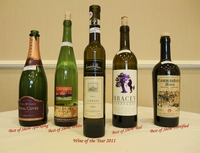 Though it faced stiff opposition in the championship round from an array of impressive wines from a number of the world's most well-regarded producers, the Inniskillin 2007 Vidal Ice Wine ($60) narrowly prevailed. Though it faced stiff opposition in the championship round from an array of impressive wines from a number of the world's most well-regarded producers, the Inniskillin 2007 Vidal Ice Wine ($60) narrowly prevailed.
Ice wine, for the uninitiated, is a wine that is made from grapes picked after they've frozen on the vine, a technique that was originally perfected in Germany. The result is a wine that is very concentrated and intensely sweet. Ice wines are typically served after dinner with cheeses, or during the course of a meal with foie gras.
Ice wines are expensive to produce because yields are extremely low, which makes them a rare and expensive treat. Inniskillin entered three ice wines, and all three were voted Platinum awards and pushed forward into the championship round.
Sommelier Challenge III brought together a dozen sommeliers from New York, San Francisco, Napa Valley, Los Angeles and San Diego to judge 657 entries from 17 countries.
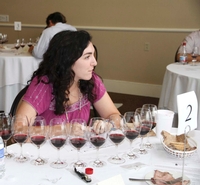 Among the top winners was perennial competition favorite Gloria Ferrer, which aced the vote for Best of Show sparkling wine with its 2002 Royal Cuvee Brut ($32), a wine that has had an impressive run in major wine competitions over the past two years. Gloria Ferrer also saw its 2008 Estate Chardonnay, Carneros ($18), advance to the finals. Among the top winners was perennial competition favorite Gloria Ferrer, which aced the vote for Best of Show sparkling wine with its 2002 Royal Cuvee Brut ($32), a wine that has had an impressive run in major wine competitions over the past two years. Gloria Ferrer also saw its 2008 Estate Chardonnay, Carneros ($18), advance to the finals.
Best of Show red wine was awarded to Bracey Vineyards for its 2006 Howell Mountain, Napa Valley Cabernet Sauvignon ($65). To win Best Red, the Bracey had to survive a runoff that included Chateau St. Jean's 2007 Cinq Cepages, Sonoma County ($75), ColSolare 2007 Red Wine, Columbia Valley ($75) and Domaine Carneros 2008 Pinot Noir, The Famous Gate, Carneros ($68).
The Cinq Cepages and ColSolare had to settle for a tie as Best Bordeaux Blend, and Domaine's Carneros' The Famous Gate was the runaway winner as Best Pinot Noir.
Voting for Best of Show white wine produced a value gem from New York's Finger Lakes region, with a Sheldrake Point Vineyard 2010 Gewurztraminer ($15) emerging as the winner. This was a beautifully balanced white from perhaps America's premier growing region for this particular grape variety.
Sheldrake Point was a narrow winner in the vote for Best White over the Rodney Strong Vineyards 2009 Chardonnay Reserve, Russian River Valley ($35).
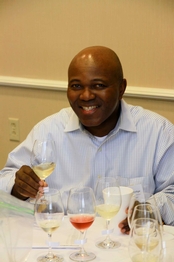 The category for Best Fortified also produced a very close vote, with the Commandaria Alasia, Cyprus ($23) prevailing by one vote over a beautiful sherry from Spain's Gonzalez Byass, the Solera 1847 Oloroso Dulce, Jerez ($20). The Cypriot winner was made in a sweet sherry style. The category for Best Fortified also produced a very close vote, with the Commandaria Alasia, Cyprus ($23) prevailing by one vote over a beautiful sherry from Spain's Gonzalez Byass, the Solera 1847 Oloroso Dulce, Jerez ($20). The Cypriot winner was made in a sweet sherry style.
There were numerous other outstanding performances. I've singled out some of the more interesting winners:
Eberle Winery of Paso Robles was named Winery of the Year. Eberle entered 14 wines and medaled with 13 of them, including a Platinum award for its 2007 Estate Cabernet Sauvignon ($34). As director, I evaluate the results and select the top performance based upon consistency and quality of awards. Besides the Platinum, Eberle earned Gold awards for its 2008 Cabernet Sauvignon/Syrah ($29), its 2007 Reserve Cabernet Sauvignon ($75), its 2009 Steinbeck Vineyard Syrah ($21) and its 2010 Muscat Canelli ($14).
Barboursville Vineyards has long been among the top wineries in Virginia, and that fact was evident by the number of awards — six — that Barboursville racked up, as well as the quality of the awards. This sterling example of the potential for Virginia wine won four Gold awards: 2007 Octagon ($39.99), 2009 Cabernet Franc Reserve ($22.99), 2010 Viognier Reserve ($21.99) and 2010 Vermentino Reserve ($21.99). All of the Barboursville winners carry a Virginia appellation.
Jefferson Vineyards is another superb Virginia winery, and it's located on the site of Thomas Jefferson's original vineyard plantings. Jefferson scored Gold awards with its 2010 Chardonnay, Reserve Monticello ($21.95) and its 2010 Pinot Gris, Virginia ($18.95). They say Virginia is for wine lovers. Now I believe it.
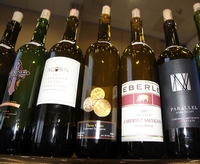 Castello Banfi of Brunello di Montalcino fame and its sister property in the Chianti district of Tuscany swept eight awards, and six of those were Gold. Castello Banfi won Gold with the 2007 Belnero Proprietor's Reserve, Toscana IGT ($39), the 2006 Brunello di Montalcino DOCG ($55) and the 2009 San Angelo Pinot Grigio, Toscana IGT ($17). The Chianti wing of Banfi took Gold awards for its 2009 Chianti DOCG Superiore ($11), the 2007 Chianti Classico Riserva DOCG ($18) and the 2008 Centine Rosso, Toscana IGT ($11). Castello Banfi of Brunello di Montalcino fame and its sister property in the Chianti district of Tuscany swept eight awards, and six of those were Gold. Castello Banfi won Gold with the 2007 Belnero Proprietor's Reserve, Toscana IGT ($39), the 2006 Brunello di Montalcino DOCG ($55) and the 2009 San Angelo Pinot Grigio, Toscana IGT ($17). The Chianti wing of Banfi took Gold awards for its 2009 Chianti DOCG Superiore ($11), the 2007 Chianti Classico Riserva DOCG ($18) and the 2008 Centine Rosso, Toscana IGT ($11).
Bouchaine Vineyards of the Napa Valley's Carneros district only entered four wines but claimed two Platinums with its 2008 Estate Pinot Noir ($30) and its 2009 Estate Chardonnay ($25). The 2010 Bouche d'Or Chardonnay ($30) won Gold.
Winery at Holy Cross Abbey acquitted itself well, representing the growing Colorado wine industry with five awards, including Platinum for a 2009 Cabernet Franc ($29) and a 2008 Syrah Reserve ($30). Both of those wines carry the Colorado appellation on the label.
Rodney Strong Vineyards of Sonoma County was among the first California wineries to take chardonnay seriously and plant it copiously. As a result, chardonnay has always been a Rodney Strong strength. That manifest itself in the Best Chardonnay award with its 2009 Chardonnay Reserve, Russian River Valley ($35). It was a very good weekend for Rodney Strong, winning 10 medals overall.
Parallel Vineyards of the Napa Valley entered two wines and walked off with Platinum and Gold for its two stellar Napa Valley Cabernet Sauvignons, the Estate ($125) and the Napa Valley ($55). The winemaker is the renowned Philippe Melka.
Complete results of the 2011 Sommelier Challenge, as well as the names and background of the participating sommeliers, can be found at SommelierChallenge.com.
Posted by Robert Whitley at 12:21 PM
|
|
September 19, 2011
Peru and Chile have Pisco, Mexico boasts Tequila, Brazil claims Cachaça, and now Bolivia offers Agwa de Bolivia. This coca-leaf liquor is new to me, but the relationship of humans and coca leaves is almost as old as civilization itself. Indigenous Andean people have been brewing and chewing coca leaves for centuries. When chewed, coca is said to act as a mild stimulant and may suppress hunger, thirst, fatigue and pain.
The cocaine alkaloid in coca leaves was first isolated in the mid 19th century, and we are all familiar with the personal, economic and societal devastation that the cocaine trade has had on the world. Global attempts to eradicate the coca plant have failed dismally, and efforts to  separate coca cultivation from narco-trafficking have been going on for decades, with legal, scientific and philosophical debates about it raging from small, mostly indigenous rural communities in Latin America to the United Nations. Since the beginning of the 21st century there have been movements in Bolivia, Peru and Venezuela to promote and expand legal markets for the use of coca plants. A particularly vocal and effective supporter of the movement is the Bolivian president Evo Morales, who was himself a coca farmer (and also, in his youth, a llama herder and trumpet player). separate coca cultivation from narco-trafficking have been going on for decades, with legal, scientific and philosophical debates about it raging from small, mostly indigenous rural communities in Latin America to the United Nations. Since the beginning of the 21st century there have been movements in Bolivia, Peru and Venezuela to promote and expand legal markets for the use of coca plants. A particularly vocal and effective supporter of the movement is the Bolivian president Evo Morales, who was himself a coca farmer (and also, in his youth, a llama herder and trumpet player).
We are not a leaf chewing culture here in the United States (especially since tobacco chaw was largely overtaken by cigarette smoking in the early 20th century), but we certainly are a drinking society. And we always like sampling the next-best-thing, especially if we can be convinced that the newest trend might combine alcohol and nutrition. Yes, that’s right, Agwa de Bolivia might be an alcoholic health drink! Well, maybe not, but in addition to its allegedly invigorating coca leaves the formula includes some 30 other ingredients that we’ve long been told are good for us, including ginseng, green tea, mint and lavender.
Perhaps we should forget the notion of cocktails as substitutes for our daily vitamin supplement and concentrate instead on the pleasures associated with imbibing the heady beverages. In the case of Agwa, the basic ingredient has travelled halfway across the world and back to deliver this pleasure. After being harvested in Bolivia, the coca leaves are accompanied by armed guards and transported to Amsterdam, where they are first macerated then distilled along with the other botanicals and herbs. The potent product is reduced to 30%/60 proof alcohol with distilled grain neutral spirits, and somewhere along the way it acquires an eerie green color.
After a PR company recently sent me three little sample bottles of Agwa de Bolivia I snapped one open immediately. As noted above, Agwa has a greenish, underwater hue. Its aroma is fresh and invigorating, with floral highlights (lavender is especially notable). It tastes agreeably sweet and bitter, with a faint minty aftertaste. I made a couple of cocktails, including an Agwa and tonic, which to my taste needed lots and lots of lime to balance the dual sweetness of liquor and tonic (admittedly my palate tips more towards savory than sweet). I preferred a tasty and refreshing Agwa de Bolivia Mojito, with fresh mint, sugar, lime (lots of it), and club soda.
Best of all was an Agwa highball with a splash of soda, dash of bitters and generous squeeze of lime. Come to think of it, with all that vitamin C from the lime juice maybe this is a health drink after all….
Posted by Marguerite Thomas at 8:19 AM
|
|
September 16, 2011
Let us speak frankly: The world is full of sparkling wines, but there’s an important sense in which selecting any of them from anywhere in the world other than France’s Champagne 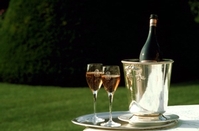 region is a trade-down. region is a trade-down.
That frank truth conveys something virtually unique about sparkling wine. As a point of comparison, buying Cabernet from places other than Bordeaux is not regarded as a trade-down by hordes of wine lovers who prefer the somewhat more opulent style that the grape attains in places like the Napa Valley or Coonawarra or Chile’s Maipo Valley. The same is true for Pinot Noir. Plenty of people think red Burgundy is too inconsistent in quality and angular in style to really deserve the veneration with which it is generally regarded. Given a set sum of money to spend, they’d really rather have a bottle from a place like Oregon.
But everything is different when bubbles are involved. The degree to which Champagne stands apart is indicated clearly by the nomenclature that we use when addressing this whole 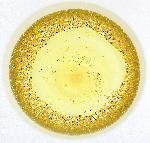 wine category: There’s “Champagne,” on one hand, and then there’s everything else, which gets lumped together as “Sparkling Wine.” wine category: There’s “Champagne,” on one hand, and then there’s everything else, which gets lumped together as “Sparkling Wine.”
Of course there are people--and wine companies--that fail to respect this distinction, using the term “Champagne” for sparkling wines sourced from elsewhere. Yet, even this proves the point, as any such usage of the “C word” is enough to start a fight with the French. Tellingly, the CIVC (the association representing the Champagne industry) now spends almost all of its time and money in the United States fighting for a certain usage of the word rather than promoting consumption of the product.
We can regard the point as established, but--like all points--it has its limits. Although it may be true that nothing sparkles like Champagne, some extraordinary sparklers still look like good buys even if they are not priced dramatically lower than Champagne. For example, Roederer Estate from Mendocino is good enough to look pretty attractive at $20 even if you could find true Champagne discounted to $30.
Nevertheless, any shrinkage of that price differential would be bad news for the Roederer, and it is an inherently perilous business model to try to sell any sparkling wine that is similar in  style to Champagne unless is it very different in price. style to Champagne unless is it very different in price.
A more viable strategy is to sell sparklers that are different in price and style, and this is precisely why Prosecco has taken off in the USA while Franciacorta has always been a commercial dud--despite being a delicious product. Even relatively pricy Prosecco can be very attractive, as in the case of Prosecco di Valdobbiadene “Primo” from Nino Franco. Priced at $28, it is a threat to Champagne because it is stylistically distinct in its fresh, foamy, faintly floral and directly fruity profile. A distinctive, completely convincing wine, it doesn’t make one wonder whether it would have been better to spend $10 more to get Champagne--because it really doesn’t tasted like Champagne.
The same can be said of Château de L’Aulée’s Crémant de Loire Brut NV, which I’ve reviewed this week on WRO and scored at 91 points. It is beautifully balanced and quite complex like any good Champagne, yet creamier, fruitier, and very slightly floral in a way that makes is quite distinctive. I’ve tried this Chenin Blanc-based sparkler several times in recent months, and regarded it extremely highly in each instance--even though it doesn’t bring Champagne to mind. Or perhaps because of that?
Posted by Michael Franz at 10:00 AM
|
|
September 14, 2011
You know the old refrain: “What do you get when you play a country music song backwards? You get your wife back, your dog back, and your truck back.” In real life, of course, neither the song nor your life usually gets played backwards, so you might as well pour yourself a glass of wine and settle back to ride the wretchedness out. But don’t settle for any old randomly selected wine; instead choose something that will best suit your frame of mind. Breakup wines are probably the easiest category of all when it comes to matching wine to mood. Just as some people have a list of favorite breakup songs, others might catalogue a selection of wines that suit both the music and the heartbreak.
Phil Collins is a frontrunner in the breakup song division. “How Can I Just Let You Walk Away,” for example, screams out for a glass of big, consoling wine, a Zinfandel perhaps (almost anything from Rosenblum Cellars will fit the bill). U2’s “You gave me nothing / Now it’s all I’ve got” requires a rich and complex wine to fill all that emptiness. So what are you saving that Helen Turley Marcassin for? Go ahead, pull it out of the cellar and persuade your most empathetic friend to come over and share it with you.
Bonnie Rait’s “I can’t make you love me” demands a glass of something elegant to sob into, Champagne perhaps. I’m thinking non-vintage Veuve Clicquot, unless you want to put a rosy spin on the situation, in which case, Perrier Jouet Rose, Champagne de Fleur might be a good choice.
Sometimes wallowing in misery seems deeply satisfying, but there comes a point where moving on, or out, is the best answer. There are plenty of songs and wines for all those broken-hearted folks who’ve evolved to the stage where they simply want to get past it all. How about Paul Simon’s old “Fifty Ways to Leave Your Lover”: “Just slip out the back, Jack.” Come to think of it, Jack seems destined for more than his share of angst. Think of Ray Charles’ “Hit the road Jack and don’t you come back no more, no more, no more, no more.” With all he’s been through Jack, and everyone else looking for breakup solace, might require a glassful of big, hedonistic 2008 Plumpjack Merlot, a wine so brawny and muscular it almost substitutes for the comforting arms that are no longer there to wrap around their grieving bodies. Of course they might consider turning to that other Jack, Mr. Daniels--but that’s a story for another day.
Posted by Marguerite Thomas at 9:47 AM
|
|
September 9, 2011
The ongoing battle between advocates of wines made with international grape varieties in an international style (read flamboyantly fruity and oak-influenced) and admirers of more specialized, often somewhat idiosyncratic wines is sometimes characterized as a conflict between innovation and tradition. Jonathan Nossiter, for example, made a movie (2004’s Mondovino) depicting just that; the writer, Alice Fearing, argues the point all the time; and importers like Kermit Lynch and Neal Rosenthal beat the same drum as a way to rev up sales.
The only problem is that it’s not true.
Wine is very old, but the so-called traditions that these folks want to defend are not. It’s true that indigenous grape varieties like Spain’s Albariño and Mencia, or Italy’s Aglianico and Verdicchio, have been cultivated for centuries. Drinkers all across the globe enjoy wines made from them today. Yet wines made from the same grapes just a generation ago were very different. Frequently oxidized and often infected by bacteria, they tended to taste sour and dirty. It’s not hard to understand why. Until quite recently, such wines had a very limited and often impoverished consumer market, and the vintners responsible for them had little access to scientifically-informed methods of viticulture and oenology. They may have been traditional, but they weren’t very good.
It’s important to remember that Europe’s vineyards were devastated by the phylloxera crisis of the late nineteenth century. Then during the first two-thirds of the twentieth, quantity, not quality, was the name of the game in most grape-growing regions. Only in the past two or three decades, with the introduction of temperature control technology and the expansion of the global wine market, has improved quality become a widely shared goal.
Truly distinctive-tasting wines made with local grapes are for the most part quite recent phenomena. With very few exceptions, they simply did not exist a generation ago. That’s why, with wine, tradition is more often something to lament rather than celebrate. After all, it was in the name of tradition that the Italian authorities insisted on the inclusion of inferior grape varieties in Chianti, just as tradition was long used as an excuse for oxidized wines coming from unhygienic cellars.
None of this is to say that the conflict between internationally-styled and more specialized wines isn’t real. It most definitely is. But this conflict is ultimately not about either tradition or innovation. Instead, it’s at heart a matter of fashion. And as the English playwright, George Bernard Shaw, once noted wryly, “a fashion is nothing but an induced epidemic.”
Posted by Paul Lukacs at 2:23 PM
|
|
September 7, 2011
Anyone who has been enjoying fine wines for at least a little while is probably familiar with the oft-repeated mantra: “Swirl, Sniff, Sip, Swallow” (although “Spit” may replace “Swallow” in a serious wine tasting). The most challenging of these commands is usually the directive to sniff, which tends to perplex recent arrivals to the world of wine. “It just smells like wine,” they say, or, if pressed, they might come up with a lame, “Um, it smells kind of flowery, maybe?” Sooner or later, if they stick with it, they too will learn the lingo and be able to toss around terms like “stone fruits,” or “wet stones”, or “herbaceous” to describe the fragrance of a given wine.
Of course what you describe as “melon” may be my “passion fruit;” your “blackberry” may be what I think of as “cassis,” and we may never agree on the esoteric “gooseberry” or “lychee”. Well, don’t feel bad. The science of wine aromas is immensely complicated, and even the experts are only just beginning to truly understand it. At Cornell, Virginia Tech, Oregon State and other universities across the country (and the world), scientists are devoting themselves to sorting out some of the mystery of why wine smells the way it does.
One reason the subject is so complex is because the aromatic components found in wine are influenced by any number of different things, including environmental factors in the vineyard such as climate and soil, by the type of grape, and by the condition of the fruit (under-ripe, mature, or beginning to rot). In the winery, aromas are influenced by conditions during fermentation (pH, temperature, nutrients in the juice, and various microflora), and during maturation. The type of yeasts used will contribute specific aromas, sometimes depending on whether they are commercial yeasts or occur naturally on the grapes (many producers are convinced that “natural,” or “indigenous” yeasts enhance aromatic complexity).
The aroma components of wines include hundreds of individual constituents representing a number of chemical functional groups. A multitude of ethyl esters is involved in compounds that contribute to fruity aromas in wine (acetate esters, for example, are responsible for tropical fruit and banana-like notes in certain wines). Higher alcohol compounds such as isobutanol are unpleasant on their own, but can provide complexity to wines if their concentration is low enough.
What about that herbaceous character found in some red wines? It’s due to a group of nitrogen containing compounds called pyrazines, which are present in green plant tissues including grapes. Pyrazines are what give a vegetal aroma (often compared to the smell of bell peppers) to Cabernet and Sauvignon Blanc. Rates of leaf photosynthesis and associated hormonal changes in the plant play a role in green-fruit aromas and flavors. Leaves in the fermenter can be a source of herbal character, as can stem contact during fermentation (which is why many premium producers use post-destemming sorting of some red fruit varieties such as Cabernet). Levels of moisture in the soil, and crop load can affect levels of pyrazines and related methoxypypyrazines. (Methoxypyrazines not only contribute to odor but also impact palate balance).
For many of us, the most luscious and seductive wine aromas are the intricate fragrances associated with Muscat and related aromatic wines such as Riesling, Gewurztraminer and Viognier. The principal components responsible for these various aromas are terpenes. Innumerable terpenes have been identified, some of which contribute floral attributes, spicy characteristics, citrus components, or herbal notes to a wine. Like methoxypyrazines, terpene concentration is influenced by factors such as grape variety, terroir, viticultural technique and winemaking process.
We haven’t even discussed the truly unpleasant smells that sometimes affect wine, such as rotten eggs (hydrogen sulfide), stinky water (methyl mercaptan), garlic and rubber (diethyl disulfide). But for non-scientists such as myself there comes a point when too much thinking about the chemistry of wine has to give way to actually pouring it into a glass, giving it a swirl to help volatilize the fragrance, and raising glass to nose. The way a wine tastes is, of course, the critical factor, but since aroma is the gateway to the most complete sensory acceptance and enjoyment of wine, it can be enlightening to give the wine a good, thoughtful sniff before taking that first sip.
Posted by Marguerite Thomas at 9:07 AM
|
|
September 2, 2011
Labor Day is fast approaching, and I can hardly wait to fire up the grill. Of course, that also means a trip to the wine locker to fetch the appropriate wines for the occasion.
Choosing the grill wines is not as simple as red wine with meat, white wine with fish. The savory, smoky aromas from the barbecue demand wines that can stand up to strong, sometimes pungent flavors and aromas, regardless of the fare.
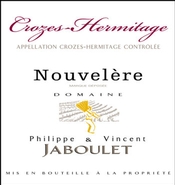 So if pinot grigio is your thing, and the plan is to serve it with grilled shrimp, better take care to open a pinot grigio with a bit of intensity instead of one of those watery, wimpy grigios that have flooded the supermarkets in recent years. So if pinot grigio is your thing, and the plan is to serve it with grilled shrimp, better take care to open a pinot grigio with a bit of intensity instead of one of those watery, wimpy grigios that have flooded the supermarkets in recent years.
For starters, I like to have a tasty rose on hand. A good rose not only makes a refreshing aperitif on a warm summer day, it often has the savory elements that make it a good match for slightly charred salmon, and the fruity elements that will stand up to spicy brats and sausages. The Eberle Winery of Paso Robles makes a fine vineyard-designated rose from syrah grapes grown in Paso's well-regarded Steinbeck Vineyard. It retails for about $17. If that's too much budget for a rose, an excellent alternative is the Julian Chivite Gran Feudo Rose from Navarro, Spain, for about $10.
When the rose runs out I am inclined to move into white wines before tackling the bold reds, and what I look for are whites with impressive character without being heavy. I wouldn't necessarily rule out chardonnay, but for me chardonnay is more enjoyable later in the season when it's cooler outside.
My go-to white is albarino from Spain's Rias Baixas district because of its intense fruit accompanied by firm acid. Albarino is a sensational food wine, particularly when served with shellfish, so excellent with grilled lobster, shrimp or scallops. Pazo de Senorans is an impressive albarino that is remarkably consistent, and it retails for about $20. Paco & Lola and Martin Codax also are very good, though not as consistent as Pazo de Senorans, and they go for around $18, though a savvy shopper will occasionally find them for less.
There is not a good deal of domestic albarino from which to choose, but it has good potential on the West Coast of the United States, and more acreage has been planted in recent years. The finest domestic albarino for my money is Tangent from California's Edna Valley. The suggested retail is a bit steep at $20, but the wine is very good, and you can find it for less if you are patient.
 As I progess to the reds that I'll drink with my smoldering hunks of steak and chicken, two things come to mind: I want flavor, but I don't want big alcohol. The flavor is necessary to cope with the smoky char of grilled meats, but big alcohol in the warmer months simply doesn't work for me. That pretty much rules out Zinfandel, which in cooler weather nicely complements grilled ribs, steaks and chops. As I progess to the reds that I'll drink with my smoldering hunks of steak and chicken, two things come to mind: I want flavor, but I don't want big alcohol. The flavor is necessary to cope with the smoky char of grilled meats, but big alcohol in the warmer months simply doesn't work for me. That pretty much rules out Zinfandel, which in cooler weather nicely complements grilled ribs, steaks and chops.
Instead, I will take a flavorful pinot noir with modest alcohol, such as the Bouchaine at about $35, or a savory red from the Rhone Valley, such as the Philippe & Vincent Jaboulet Crozes-Hermitage "Nouvelere" that retails for about $30.
A good Cru Beaujolais, such as the Morgon or Moulin-a-Vent from Georges Duboeuf, which both retail for around $15. If you go for the Beaujolais as a cost-saving measure, try to purchase something from either the 2009 or 2010 vintages, both of which were excellent.
Of course, once I've selected the wines, I must return to my primary function as grillmeister. While cooking, I try to always leave one hand free for a glass of vino, preferably something with bubbles! Perhaps a Prosecco from Adami or Bisol? Indeed.
Posted by Robert Whitley at 11:30 AM
|
|
 |
|